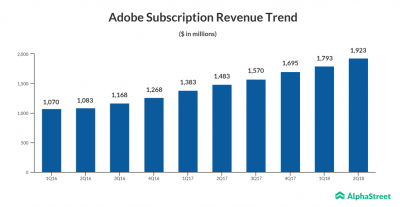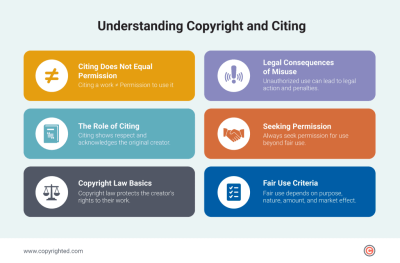Adobe Stock offers a vast library of images, videos, and templates, making it essential for designers and marketers. However, the licensing rules can be complex, and mistakes can lead to legal complications. This guide will help you understand the key aspects of Adobe Stock licensing and highlight common pitfalls to avoid, ensuring you use the resources correctly and effectively.
Understanding Adobe Stock Licensing

Adobe Stock operates under specific licensing agreements that dictate how users can utilize their assets. There are two primary types of licenses: Standard and Extended. The Standard License permits use for web, print, and some other projects, while the Extended License provides broader rights, including merchandise and other commercial purposes. It’s crucial to read through the licensing agreements carefully, as the terms affect how you can utilize the content in various projects.
Additionally, each asset may have specific restrictions based on the contributor’s preferences. These restrictions could include limitations on the number of copies produced or specific prohibited uses. Understanding these details can help you choose the right assets while protecting your projects from legal claims. Remember that compliance with licensing terms not only avoids legal issues but also supports creators by ensuring they are compensated for their work.
Common Licensing Mistakes to Avoid
Avoiding common mistakes is key to using Adobe Stock effectively. Here are some crucial points to consider:
- Ignoring License Types: Always check which type of license the asset falls under and ensure it fits your intended use.
- Overlooking Restrictions: Read the specific guidelines for each asset; failing to do so can result in unauthorized usage.
- Disregarding Attribution: Some assets may require proper credit; neglecting this can breach licensing terms.
- Using Assets Beyond Term Limits: Ensure you understand if licenses have expiry limits and plan accordingly.
- Misusing Images in Sensitive Contexts: Assets cannot be used in ways that could imply endorsement or without proper licensing.
By adhering to these guidelines, you can minimize licensing risks and make the most of Adobe Stock‘s resources.
Choosing the Right License for Your Project
When it comes to using images from Adobe Stock, one of the first things you’ll encounter is the licensing options. Understanding these licenses is crucial to avoid common pitfalls. Adobe Stock typically offers two primary types of licenses: standard licenses and extended licenses. But what’s the difference, and how do you choose the right one? Let’s break it down:
- Standard License: This is perfect for most personal and commercial projects, such as blogs, presentations, and advertisements. With a standard license, you can:
- Use the image on websites and social media
- Print the image in marketing materials (up to 500,000 copies)
- Use the image in products for resale (like merchandise) with some restrictions
- Extended License: Opt for this if you need greater flexibility. An extended license allows:
- Unlimited copies in print
- Inclusion of the image in merchandise without restrictions
- Use in apps, templates, or other products for sale
So how do you know which license to choose? Here are some tips:
- Assess Your Project Scale: If it’s for personal use or a small-scale campaign, a standard license usually suffices.
- Consider Redistribution: If you plan to sell products featuring the image, lean towards an extended license.
- Future-Proof: If there’s a chance your project will grow, investing in an extended license from the start can save you from headaches later.
By understanding the differences and carefully considering your project’s needs, you can make an informed choice that sets your work up for success!
How to Properly Attribute Stock Images
Attributing stock images correctly is not just a legal requirement; it’s also a way to respect the work of photographers and creators. By properly acknowledging their work, you foster good relationships within the creative community. Here’s a simple guide on how to do it effectively:
- Check the License Agreement: Always start by reviewing the specific licensing terms for each image. Some images may require attribution, while others do not.
- Follow Attribution Guidelines: If attribution is needed, here’s a recommended format:
- Placement Matters: Ensure the attribution is easy to find. Here are a few common placement options:
- At the bottom of the image
- In a credits section of your project
- On a dedicated credits webpage
“Image by {Photographer’s Name} on Adobe Stock”
By giving proper credit, you not only comply with legal requirements but also acknowledge the effort and creativity of the content creators. So remember, attributing stock images is both good practice and good manners!
Best Practices for Using Adobe Stock Images
Using Adobe Stock images can enhance your projects significantly, but to get the most out of your subscription while avoiding potential pitfalls, it’s essential to follow some best practices. Here are several tips to ensure smooth sailing:
- Always Check License Type: Adobe Stock offers various licenses, including standard and extended. Make sure you understand which one suits your project needs, especially if you plan to use images for commercial purposes.
- Customize Your Images: Enhance the uniqueness of stock images by customizing them. Editing images—changing colors, adding filters, or combining multiple elements—can help make the visuals distinctly yours.
- Attribute Creators When Required: While most Adobe Stock images don’t require attribution, if you’re using content that does, ensure you give proper credit to the creator.
- Maintain Records: Keep a log of the images you download, including their licensing and usage terms. This not only helps if you ever need to refer back, but it’s also a good practice for organizational purposes.
- Stay Within Download Limits: Keep in mind your plan’s download limits to avoid unnecessary charges. Use your credits wisely, downloading those images that truly enhance your project.
By following these best practices, you’re not just protecting yourself legally but also ensuring that your designs are effective and polished. Remember, it’s all about creating something unique and abiding by the rules!
Staying Updated on Adobe Stock Policies
Adobe Stock is continually evolving, and so are its policies. Staying informed about any changes is crucial to ensure you remain compliant and make the most of your subscription. Here are some tips on how to keep up:
- Regularly Check the Adobe Stock Website: The official website often includes updates about licensing agreements, new features, and policy changes. Make it a habit to visit regularly.
- Subscribe to Newsletters: Adobe frequently sends out newsletters featuring updates and tips. Subscribe to these to receive essential information directly to your inbox.
- Follow Adobe Stock on Social Media: Engaging with Adobe Stock’s social media channels can provide you with real-time updates, user tips, and insights from Adobe experts.
- Participate in Community Forums: Joining forums or online communities related to Adobe Stock can also be beneficial. Fellow users often discuss changes and share their insights or experiences.
By keeping yourself informed, you not only avoid licensing mistakes but also unlock the full potential of Adobe Stock’s offerings. Make staying updated part of your routine, and you’ll have more confidence in your creative decisions!
Case Studies of Licensing Errors
When it comes to licensing, even a minor misstep can have significant repercussions. Let’s explore a few real-life examples to understand how these mistakes happen and how to avoid them.
1. Misinterpreting Usage Rights: One designer used an image from Adobe Stock for both print and digital marketing without realizing the license only covered digital use. This led to a hefty fine when the company was called out for copyright infringement.
– Lesson: Always double-check the scope of the license and ensure it aligns with your intended usage.
2. Failing to Attribute: A small business owner used an Adobe Stock photo in a promotional video but forgot to provide proper attribution as per the license requirements. The oversight resulted in a takedown notice from the copyright holder.
– Lesson: Keep track of the requirements for attribution to avoid pitfalls.
3. Not Keeping Track of Licenses: A marketing team downloaded several images for a campaign but lost track of which licenses were applicable. They ended up using an image that required a model release for commercial purposes, which they didn’t secure. The company faced legal issues when the model objected to their use.
– Lesson: Maintain a clear log of your licenses, including any model or property releases.
These case studies illustrate that while licensing errors can happen to anyone, they are often preventable. By staying informed and organized, you can safeguard against common pitfalls in the licensing world.
Resources for Learning More About Licensing
Diving into licensing can seem daunting, but there are plenty of resources available to help clarify the complexities. Here’s where to expand your knowledge:
- Adobe Stock’s Licensing Guide: This is your go-to for understanding different types of licenses, including standard and extended licenses. Check it out directly on the Adobe Stock website.
- Online Courses: Platforms like Udemy and Coursera offer courses on copyright and licensing. Search for courses specifically tailored to stock photography licensing.
- Blogs and Articles: Websites like PetaPixel and CreativeBloq regularly publish articles about licensing pitfalls and legal advice for creatives. Stay informed!
- Documentation Support: Adobe provides customer support and detailed documentation that addresses common questions about using their assets legally.
- Industry Networking: Join forums or social media groups dedicated to graphic design and photography. Engage in discussions about licensing to hear about others’ experiences and solutions.
By utilizing these resources, you can empower yourself with the knowledge necessary to navigate licensing confidently. Remember, the more you learn, the better equipped you will be to avoid common licensing mistakes!
How to Avoid Common Licensing Mistakes with Adobe Stock
When utilizing Adobe Stock for your creative projects, understanding licensing is crucial to avoid legal pitfalls. Here’s how to navigate common mistakes associated with licensing:
1. Understand Different Licensing Types
Adobe Stock offers two main types of licenses: Standard and Extended. Misunderstanding these can lead to usage issues.
- Standard License: Permits use for marketing, web graphics, and social media, but limits print runs to 500,000.
- Extended License: Allows for unlimited print runs and inclusion in merchandise, making it suitable for wider commercial purposes.
2. Read License Agreements Carefully
Always review the license agreements before downloading assets. This ensures clarity on what is permitted and what isn’t.
3. Keep Track of Your Downloads
Maintain a record of assets downloaded from Adobe Stock. This will help avoid repeated downloads, which can lead to compliance issues.
4. Attribute Properly When Required
While most Adobe Stock images don’t require attribution, understanding when it is necessary can protect against copyright infringement.
5. Monitor Your Use of Assets
Be vigilant in how you use the downloaded content. Ensure that the usage aligns with the license guidelines to avoid legal challenges.
| Licensing Type | Usage | Print Limit |
|---|---|---|
| Standard | Web, marketing, social media | Up to 500,000 |
| Extended | Merchandise, unlimited distribution | Unlimited |
By understanding these licensing aspects and following best practices, you can effectively avoid common mistakes when using Adobe Stock. Take the time to educate yourself, and you’ll enhance your creative projects while steering clear of potential legal issues.


